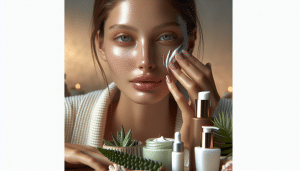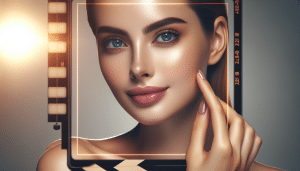Skincare Routines People Swear By for Glowing Skin
Natalie Brooks September 3, 2025
Unlock the real secrets behind skincare routines that help enhance natural radiance. This in-depth wellness and beauty guide dives into the science, habits, and expert-backed insights that shape the journey toward glowing skin for people looking to nurture their complexion.
Understanding the Importance of Daily Skincare
Truly radiant skin is grounded in daily care that respects your body’s natural cycles. A consistent skincare routine isn’t just about products—it’s about creating rituals that support skin health over time. Many dermatologists emphasize that gentle cleansing, adequate hydration, and regular use of sunscreen are key steps for individuals aiming to enhance vitality and reduce visible signs of aging. Prioritizing daily routines, such as washing with a mild cleanser and thoroughly moisturizing, helps the skin’s natural defenses remain robust. The difference isn’t always instant, but over weeks and months, commitment shows remarkable results for texture and luminosity (Source: https://www.aad.org/public/everyday-care/skin-care-basics/care/skin-care-basics).
Cleansing is a foundation. By removing dirt, makeup, and environmental impurities, pores can stay clearer and the skin barrier functions optimally. Experts recommend using lukewarm water and avoiding harsh scrubs, which may irritate or compromise delicate skin. In many cases, gentle products that avoid excessive fragrances or alcohols tend to support all skin types, including sensitive ones. Effective cleansing creates a clean slate for other steps in a regimen, making serums and treatments work more efficiently (Source: https://www.health.harvard.edu/staying-healthy/skin-care-routines).
The role of moisturization cannot be overlooked, regardless of whether the skin feels dry. Even individuals with combination or oily skin benefit from humectants and emollients, which lock in hydration and balance oil production. Many formulations include active botanical extracts or ceramides designed to reinforce the skin’s natural shield. When SPF is layered as part of the daytime routine, it further supports youthful appearance and defense against UV damage. Small steps, repeated faithfully, lay the groundwork for glowing, resilient skin over time.
Exploring Multi-Step Routines: More Than Just Trends
Multi-step skincare routines have garnered widespread attention, particularly those originating from East Asian beauty rituals. Far from being passing trends, these regimens offer structured approaches to layering ingredients that support different needs. Double-cleansing, for example, begins with an oil-based cleanser to dissolve makeup and then follows with a water-based cleanser to remove residue. This approach targets both oil- and water-soluble impurities, leaving the skin exceptionally clean without stripping essential moisture (Source: https://www.ncbi.nlm.nih.gov/pmc/articles/PMC7739645/).
Toners and essences provide an extra dimension for those seeking luminous skin. Traditionally, toners aim to balance skin’s pH and lightly hydrate after cleansing. Modern formulas often blend hydrating agents, antioxidants, or soothing botanicals. Essences, meanwhile, are lightweight, nutrient-rich infusions designed for deep hydration and preparation of the skin for serums. This layering philosophy maximizes the absorption of actives like niacinamide, hyaluronic acid, or peptides, contributing to visible plumpness and glow.
Serums top off multi-step routines with concentrated formulas that target specific concerns. Whether addressing uneven tone, fine lines, or dullness, daily application helps deliver ingredients deep into the skin’s layers. Serums with vitamin C or retinoids are particularly favored for enhancing radiance and promoting smoother texture. Mask treatments can be incorporated weekly to boost effects, supporting ongoing transformation for those committed to skincare as a daily act of self-care.
Tips for Personalizing Your Skincare Plan
No two skin types are identical. Understanding your unique skin needs is key to building a routine that addresses individual goals—whether it’s controlling oil, maintaining hydration, or calming sensitivity. Experts suggest patch-testing new products before full application. This habit helps prevent adverse reactions and gives time for skin to adjust. Observing how your skin responds to ingredients, such as exfoliants or active serums, enables you to tailor routines for long-lasting comfort and visible benefits (Source: https://www.cancer.org/healthy/stay-away-from-tobacco/skin-protection/skin-care-tips.html).
Adapting routines to changing seasons is another facet often overlooked. Humidity, temperature, and UV index all play roles in skin physiology. For instance, heavier creams may shield skin against winter dryness, while lightweight gels and higher SPF support resilience during sunny months. Monitoring these shifts helps maintain balance, reduce risk of irritation, and ensure lasting glow throughout the year.
A mindful approach extends beyond product selection. Factors like sleep, diet, and stress management exert a profound influence on skin’s appearance. Prioritizing rest, drinking adequate water, and including antioxidant-rich foods positively impact overall health and complexion. Seeing skincare as a component of holistic wellness often leads to more sustainable, rewarding results than relying on products alone. Routines that reflect one’s lifestyle, values, and evolving needs are the cornerstone of radiant skin.
The Science Behind Glow: Ingredients to Know
Certain ingredients stand out for their proven effectiveness in promoting healthy, glowing skin. Hyaluronic acid is a hydration powerhouse, known for attracting and retaining moisture. Research has shown this molecule helps keep the skin plump and smooth, reducing the appearance of fine lines. Vitamin C, another star ingredient, supports collagen synthesis and helps protect against oxidative stress, which can contribute to a dull complexion (Source: https://www.ncbi.nlm.nih.gov/pmc/articles/PMC5605218/).
Alpha-hydroxy acids (AHAs), found in many exfoliating treatments, gently slough away dead skin cells. With regular use, AHAs like glycolic acid can unveil a brighter and smoother surface. Niacinamide is another multitasker, praised for its ability to refine skin texture, minimize redness, and strengthen the skin barrier. These ingredients often form the backbone of radiance-enhancing formulas, supplying visible results for users who commit consistently.
Peptides and ceramides are foundational for those focused on skin strength and elasticity. Peptides, short chains of amino acids, signal the skin to produce more collagen and elastin. Ceramides, meanwhile, restore the protective lipid barrier, helping the skin retain water and defend against environmental harm. Integrating these science-backed actives into daily routines elevates overall wellness and beauty by supplying both instant glow and lasting transformation.
Lifestyle Habits That Influence Skin Health
Skincare does not exist in isolation—it’s shaped by the broader context of lifestyle. Sleep is one of the most critical, often underestimated, contributors to skin appearance. During deep rest, the body repairs damage from the day, including that on the skin’s surface. Consistent, restful sleep is often reflected in a well-rested, vibrant complexion. Poor sleep, on the other hand, can lead to dullness, increased inflammation, and under-eye circles (Source: https://www.sleepfoundation.org/physical-health/how-sleep-affects-your-skin).
Diet matters, too. Foods rich in vitamins, minerals, and healthy fats supply the skin with critical building blocks for repair and glow. Omega-3 fatty acids, antioxidants from colorful fruits and vegetables, and adequate hydration combine to support a healthy skin barrier. Conversely, excessive sugar, processed foods, or dehydration may dull the complexion and contribute to congestion or dryness.
Stress management is often overlooked as a skincare tool. Chronic stress can disrupt hormones, increase inflammation, and intensify skin issues such as breakouts or sensitivity. Mindful activities—like yoga, meditation, or gentle walks—help regulate stress response and are increasingly recommended by wellness professionals. Integrating positive lifestyle choices enhances the effectiveness of topical routines, making wellness and beauty a truly holistic practice.
Seeking Professional Guidance for Individual Needs
Sometimes, sorting through the abundance of wellness information can be overwhelming. Professional input from dermatologists or certified estheticians can clarify what works best for specific skin concerns. These experts assess skin condition with unbiased eyes, recommend custom regimens, and suggest treatments for persistent issues like acne, pigmentation, or early signs of aging. They also advise on the safe use of active ingredients, helping people avoid irritation and optimize results (Source: https://www.aad.org/public/diseases/a-z/skin-care-specialist).
Clinical treatments, such as light-based therapies or chemical exfoliations, may be appropriate for certain goals. These procedures, when accompanied by post-care routines, enhance skin tone and promote renewal. Professionals remain informed about the newest evidence-based advancements, sharing these with people seeking visible improvements. Open dialogue ensures expectations are realistic and that every step supports both short-term satisfaction and long-term wellness.
Embracing lifelong learning is at the heart of a successful skincare journey. Staying updated on the latest guidance, reading trusted sources, or asking questions at wellness checkups reinforces effective habits. Those who prioritize education and professional support often experience greater confidence in their routines, discovering that truly radiant skin is as much about knowledge as it is about daily rituals and product choices.
References
1. American Academy of Dermatology. (n.d.). Skin care basics. Retrieved from https://www.aad.org/public/everyday-care/skin-care-basics/care/skin-care-basics
2. Harvard Health Publishing. (n.d.). The science of skin care routines. Retrieved from https://www.health.harvard.edu/staying-healthy/skin-care-routines
3. Patel, R. & Khaled, E. (2020). The impact of double cleansing in facial skincare. International Journal of Dermatology, 59(11), 1319-1325. Retrieved from https://www.ncbi.nlm.nih.gov/pmc/articles/PMC7739645/
4. American Cancer Society. (n.d.). Skin care tips for healthy skin. Retrieved from https://www.cancer.org/healthy/stay-away-from-tobacco/skin-protection/skin-care-tips.html
5. Pullar, J., Carr, A. & Vissers, M. (2017). The roles of vitamin C in skin health. Nutrients, 9(8), 866. Retrieved from https://www.ncbi.nlm.nih.gov/pmc/articles/PMC5605218/
6. Sleep Foundation. (n.d.). How sleep affects your skin. Retrieved from https://www.sleepfoundation.org/physical-health/how-sleep-affects-your-skin








